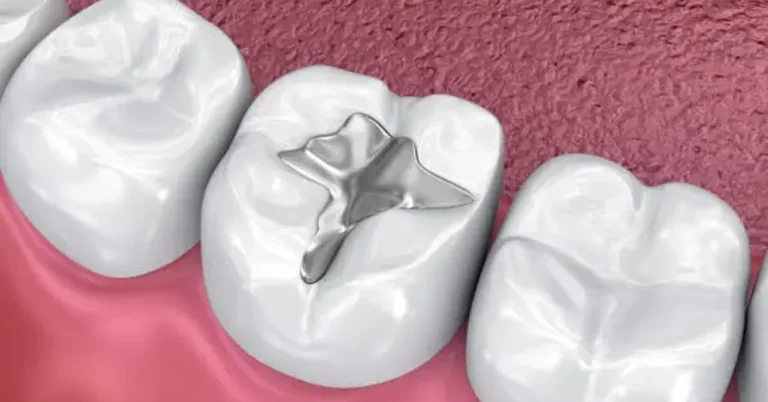Dental fillings are among the most common dental procedures performed worldwide. If you’ve recently been told you need a filling, you might be wondering, how long does a fill take? Understanding the process can ease anxiety and help you plan your day better. In this comprehensive guide, we’ll walk you through everything you need to know about dental fillings — from what they are to how long they take, and how to care for them afterward.
TRENDING
What Is Clover Honey? Benefits, Taste & Uses Explained
What Is A Dental Filling?
A dental filling is a treatment used to restore a tooth damaged by decay back to its normal function and shape. When a dentist removes the decayed portion of the tooth, they fill the cleaned-out cavity with a filling material to prevent further damage.
Types of Filling Materials
- Amalgam Fillings: Silver-colored and durable but less common nowadays due to aesthetics.
- Composite Fillings: Tooth-colored and blend naturally with your teeth.
- Gold Fillings: Very durable but expensive.
- Ceramic Fillings: Porcelain-based, stain-resistant, and aesthetically pleasing.
- Glass Ionomer: Used mostly for fillings below the gum line or in children.
Each material has its own benefits and affects the time it takes for the procedure.
How Long Does A Dental Filling Take?
Average Time for a Dental Filling Procedure
Typically, a single dental filling procedure takes between 20 minutes to 1 hour, depending on several factors. Most commonly, simple cavities and composite fillings take about 30 to 45 minutes.
Factors Affecting Filling Duration
Size and Location of the Cavity
Larger cavities or fillings in difficult-to-reach areas can extend the procedure time.
Type of Filling Material Used
Composite fillings often take longer than amalgam because they require a layering and curing process.
Number of Cavities Being Filled
If multiple teeth need fillings, expect a longer appointment.
Patient’s Oral Health and Cooperation
Patients who can sit still and cooperate make the process faster.
Dentist’s Experience and Equipment
Modern technology like laser dentistry or digital scanners can speed things up.
Step-by-Step Dental Filling Process
Examination and Preparation
Before the filling, your dentist will examine the tooth and may take X-rays to assess the extent of decay.
Numbing the Area
Local anesthesia is administered to numb the area around the affected tooth, ensuring a pain-free procedure.
Removing the Decay
The dentist removes the decayed part of the tooth using a drill or laser.
Cleaning the Cavity
The cavity is cleaned thoroughly to remove bacteria and debris.
Filling the Cavity
The dentist fills the cleaned cavity with the chosen filling material. Composite fillings require curing with a special light.
Shaping and Polishing
The filling is shaped to match your natural tooth and polished for a smooth finish.
Tips To Make Your Filling Appointment Quick And Easy
- Communicate with your dentist: Tell them about any dental anxiety or health conditions.
- Arrive early: So you’re relaxed and ready.
- Follow pre-appointment instructions: Like avoiding food if sedation is planned.
- Bring headphones: Music can help ease nerves.
After The Filling: What To Expect And How Long Recovery Takes
Immediate Sensitivity
After a filling, it’s common to feel some tooth sensitivity to pressure, air, sweet foods, or temperature. This usually subsides within a few days to a week.
Avoid Certain Foods
For the first 24 hours, avoid sticky, hard, or chewy foods, especially with composite fillings.
Oral Hygiene
Maintain good oral hygiene by brushing gently and flossing to prevent further decay.
When To Contact Your Dentist After A Filling
- Persistent pain lasting more than a week.
- Sensitivity worsening instead of improving.
- A feeling that the filling is too high or uneven.
- Signs of infection like swelling or pus.
Benefits Of Timely Dental Fillings
- Prevent Further Decay: Stops cavities from worsening.
- Restore Tooth Function: Enables normal biting and chewing.
- Prevent Tooth Loss: Saves the natural tooth.
- Maintain Oral Health: Avoids more complex procedures.
Myths About Dental Fillings
- Fillings are painful: Thanks to anesthesia, the process is generally pain-free.
- Fillings last forever: No, they may need replacement after several years.
- Only kids need fillings: Adults get cavities too, so fillings are common at any age.
Conclusion
So, how long does a fill take? The answer varies but expect about 30 to 60 minutes for a typical dental filling. The procedure is quick, straightforward, and an essential step to maintain healthy teeth. Don’t delay if your dentist recommends a filling — timely treatment can save you discomfort and bigger dental problems down the road.
ALSO READ: What Causes Corn On Pinky Toe? Symptoms & Solutions
FAQs
What is a dental filling?
A dental filling is a treatment used to repair a tooth affected by decay by removing the decayed part and filling it with a suitable material to restore the tooth’s function and appearance.
Does getting a filling hurt?
Most fillings are done under local anesthesia, so you should not feel pain during the procedure. Some mild sensitivity afterward is normal.
How long will my filling last?
Fillings typically last between 5 to 15 years, depending on the material and oral care habits.
Can I eat immediately after a filling?
It depends on the filling type. For composite fillings, dentists often recommend avoiding eating for at least an hour. For amalgam, wait a few hours before chewing.
How do I care for my teeth after a filling?
Maintain good oral hygiene with regular brushing and flossing, avoid hard or sticky foods immediately after the filling, and visit your dentist regularly.

